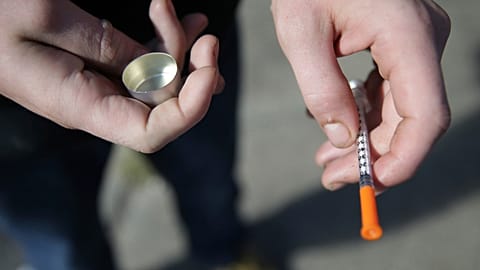A new survey has heightened concerns vaping might be a “gateway” to other harmful behaviours in teenagers.
 ADVERTISEMENT
ADVERTISEMENT
Vaping nicotine has been strongly linked with an increased likelihood of binge drinking and cannabis use, according to a new major study.
A database of more than 50,000 teenagers in the US was used to track trends in the use of cigarettes, alcohol, cannabis, vaping of both nicotine and cannabis, and other substances.
The researchers found teenagers who vaped were 20 times more likely to use cannabis than those who did not use nicotine at all, and those who both smoked and vaped were 40 times more likely to use the drug.
An association between smoking and vaping was also found, with the association increasing in magnitude the higher the levels of binge drinking.
The findings, published in the journal Substance Use and Misuse, may add to growing public health concerns about the increased popularity of vaping use among young people.
“While the overall health risks of vaping are lower than smoking, electronic cigarettes are still harmful to adolescents and warrant ongoing surveillance – especially as the long-term impacts remain unknown,” said lead author, Noah Kreski from the Columbia University Mailman School of Public Health.
“Our results indicate that vaping is not an isolated behaviour, but rather strongly tied to other substance use that can harm adolescents and make quitting nicotine more difficult.
“Recognising the strong overlap between various forms of substance use, effective intervention efforts should work to simultaneously address vaping, drinking and cannabis use to encourage the health and well-being of young people”.
The researchers used the annual Monitoring the Future survey for the study, which was conducted by the National Institute on Drug Abuse (NIDA). They examined data from 51,872 adolescents who took part in the survey between 2017 and 2019.
The authors highlight certain limitations of this study relating to the survey, including the fact nicotine vaping and smoking were self-reported by participants, which they said may be vulnerable to measurement and recall bias.
Experimental vaping up 50 per cent amongst UK children
A survey released on Thursday meanwhile showed a big rise in experimental vaping amongst children in the UK.
The YouGov survey, conducted for the charity Action on Smoking and Health (ASH), found that there has been a 50 per cent rise in children trying out vaping since 2022.
Last year, 7.7 per cent of children had experimented with vaping, while this year that number has jumped to 11.6 per cent.
It found that disposable - or single use - e-cigarettes are currently the vape of choice for children, and they are primarily acquiring them from corner shops.
There was, however, no significant change since last year in the proportion of children who are currently smoking or vaping.
“We need to stem the tide of child vape experimentation and the government’s investment in a crackdown on illegal underage sales of vapes is a vital first step,” said Deborah Arnott, the chief executive of ASH.
“But enforcement on its own won’t do the trick without tougher regulation to address the child friendly promotion of these cheap and attractive products. The ASH youth survey demonstrates the rapid growth of instore promotion of vapes, using brightly coloured pack displays, reminiscent of cigarette displays from yesteryear.
“The evidence is clear, government needs to take strong action to prevent the marketing of vapes to children”.
ASH said the growth in vaping is due to the increasing popularity of cheap, easy to use and attractively branded single use, disposable vapes.
While experts are concerned about a rise in children experimenting with vaping, Ann McNeill, a professor of tobacco addictions at King’s College London, said the misperception that vaping is more than, or equally harmful than smoking, was also dangerous.
“ASH surveys show that for the first time this year, the largest proportion of adults who smoke and the majority of all children, think that vaping is more than or equally harmful than smoking,” she said.
These misperceptions are likely to encourage children to believe that they might as well smoke as vape, and discourage adults who smoke but have never vaped from taking up the government’s ‘swap to stop’ offer.
“A well funded communications campaign is needed to address these growing misperceptions”.
















